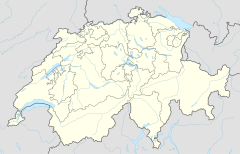This article may be unbalanced toward certain viewpoints.(November 2018) |
 | |
| Company type | Private (held by NanoWorld Holding AG) |
|---|---|
| Industry | Nanotechnology |
| Founded | Neuchâtel, Switzerland (June 23, 2000) |
| Headquarters | Neuchâtel, Switzerland |
Area served | Worldwide |
Key people | Manfred Detterbeck (Founder & CEO) |
| Products | AFM Probes AFM tips AFM cantilevers |
Number of employees | Over 50 - Jan. 2012 |
| Parent | NanoWorld Holding AG, Switzerland |
| Website | www |
NanoWorld is the global market leader for tips for scanning probe microscopy (SPM) and atomic force microscopy (AFM). The atomic force microscope (AFM) is the defining instrument for the whole field of nanoscience and nanotechnology. It enables its users in research and high-tech industry to investigate materials at the atomic scale. AFM probes are the key consumable, the “finger” that enables the scientist to scan surfaces point-by-point at the atomic scale. Consistent high quality of the scanning probes is vital for reproducible results.
